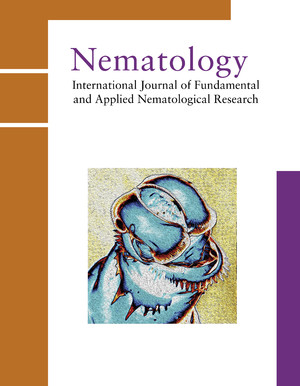Root-lesion nematodes (Pratylenchus) have a worldwide distribution and cause severe production constraints on numerous important crops. During a survey of the wheat-growing area of Morocco, 17 populations of root-lesion nematode were collected. They were identified on the basis of their morphological and morphometric characters, and by molecular methods. Microscopic observations of females and males demonstrated the occurrence of P. penetrans in 13 of the 17 samples; P. thornei and P. pseudocoffeae were detected in four samples from Zaers and a single sample from Settat, respectively. A duplex PCR primer set was used to confirm the presence of P. penetrans while the species-specific forward primer PTHO and the common reverse primer D3B were used for P. thornei. For the remaining populations, the D2-D3 expansion segments of the 28S rRNA gene were amplified and the obtained sequences were compared with those of Pratylenchus species in the GenBank database. This comparison confirmed the morphological identifications and revealed a population of P. pinguicaudatus. The study of the phylogenetic relationship of the Moroccan Pratylenchus populations showed a high similarity (99-100%) between all P. penetrans populations. The population dynamics of six Pratylenchus populations from Morocco were evaluated on carrot disk cultures at 4, 8 and 12 weeks after inoculation, and at 10, 15, 20 and 25°C. The optimum temperature for reproduction of all populations was 20°C. After 8 weeks at this temperature, nematode numbers increased up to 458-fold, 310-fold and 252-fold for the four populations of P. penetrans, the P. thornei and the P. pseudocoffeae population, respectively.

